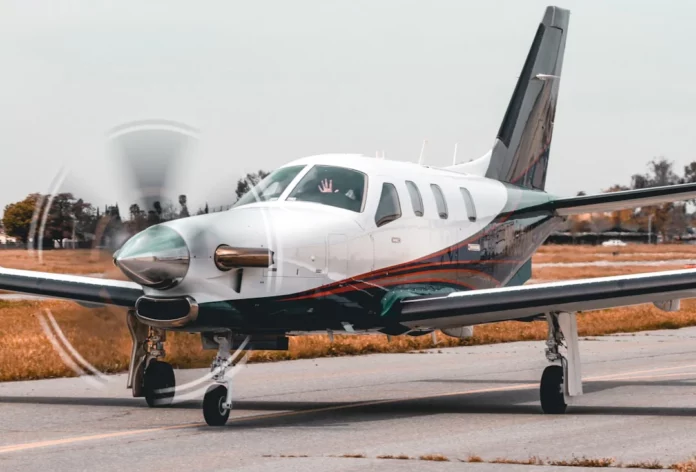In the field of aviation, understanding and adhering to standard temperature and pressure (STP) is of critical importance. STP refers to a set of standard conditions that help pilots, aircraft manufacturers, and air traffic controllers make accurate calculations and decisions. By establishing consistent reference points, STP enables the aviation industry to operate safely and efficiently. In this article, we will explore the concept of STP, its significance in aviation, and how it is utilized in various aspects of aircraft operations.
Contents
The Importance of Standard Temperature and Pressure
Standard temperature and pressure play a crucial role in aviation operations, particularly in the fields of performance calculation, aircraft design, and meteorology.
Performance Calculation
When it comes to performance calculations, pilots and aircraft engineers rely on standardized values of temperature and pressure. These values allow them to determine the aircraft’s optimal speed, range, fuel consumption, and engine performance. By using STP as a reference point, pilots can accurately assess the aircraft’s capabilities and plan their flights accordingly.
For example, STP is critical in calculating the maximum takeoff weight of an aircraft. By factoring in the lower air density associated with lower temperatures and higher pressures, pilots can determine the weight limitations of their aircraft and ensure a safe and efficient takeoff.
Additionally, STP is used to calculate the density altitude, which is the altitude corrected for variations in temperature and pressure. Density altitude is crucial for determining aircraft performance, as it affects climb rate, engine power, and lift. By considering the impact of non-standard temperature and pressure conditions on density altitude, pilots can better understand the aircraft’s performance capabilities in different environments.
Aircraft Design
Standard temperature and pressure also play a significant role in the design and certification of aircraft. Engineers consider STP when determining the aircraft’s structural requirements, aerodynamic characteristics, and engine performance.
For instance, the maximum operating temperature of an aircraft engine is often specified with reference to standard temperature. By setting a standard benchmark, manufacturers ensure that the engine can perform optimally within a specified range of temperatures. This allows for consistent engine performance across different aircraft models and simplifies maintenance and operations.
Additionally, using standard pressure during aircraft design helps engineers determine the structural integrity of the aircraft. By factoring in the atmospheric pressure and its impact on aircraft materials, engineers can design the aircraft’s fuselage, wings, and other components to withstand the anticipated forces during flight.
Moreover, STP is crucial in determining the drag coefficient of an aircraft. The drag coefficient refers to the measure of aerodynamic drag, which directly affects an aircraft’s fuel consumption and performance. By considering the impact of non-standard temperature and pressure conditions on the drag coefficient, engineers can design aircraft that maximize fuel efficiency and increase performance capabilities.
Meteorology
Meteorology plays a crucial role in aviation, and standard temperature and pressure come into play when analyzing and predicting atmospheric conditions. Meteorologists use STP as a reference point to study weather patterns, temperature inversions, and atmospheric stability.
When it comes to weather forecasting, understanding STP allows meteorologists to convert raw weather data into more meaningful and accurate information. By considering the temperature and pressure deviations from standard conditions, meteorologists can interpret weather data in the context of specific locations and altitudes, providing pilots with valuable insights for flight planning and decision-making.
Moreover, STP provides meteorologists with a consistent baseline to assess the stability of the atmosphere. Temperature and pressure variations play a significant role in the formation of weather systems, such as thunderstorms, hurricanes, and air masses. By comparing actual conditions to standard temperature and pressure, meteorologists can better understand the atmospheric processes driving weather phenomena and issue timely weather advisories.
Standard Temperature and Pressure in Practice
Now that we understand the significance of standard temperature and pressure in aviation, let’s explore how these values are practically applied in everyday aviation operations.
Performance Charts
Performance charts are an essential tool for pilots and aviation enthusiasts. These charts provide valuable information regarding an aircraft’s performance under different conditions, allowing pilots to make informed decisions during flight planning and execution.
Most performance charts, such as the aircraft’s takeoff and landing performance charts, are based on standard temperature and pressure for reference. By inputting the current atmospheric conditions and adjusting for deviations from standard values, pilots can accurately determine factors such as the required runway length, takeoff distance, and climb rate.
For example, using the takeoff performance chart, pilots can determine the minimum runway length required for takeoff based on the aircraft’s weight, atmospheric conditions, and deviations from standard temperature and pressure measurements. By considering these factors, pilots can ensure safe takeoffs and optimize their flight operations.
Standard temperature and pressure values are also used in navigation planning to determine the aircraft’s performance capabilities and plan fuel-efficient routes.
When calculating the aircraft’s fuel consumption, pilots consider the density of the air, which is influenced by temperature and pressure. By accounting for deviations from standard conditions, pilots can estimate the impact on fuel efficiency and plan their routes accordingly. This allows them to optimize their fuel usage and minimize operating costs.
Furthermore, standard temperature and pressure values are essential when calculating the true airspeed (TAS) of an aircraft. TAS refers to the actual speed of the aircraft through the air, unaffected by atmospheric conditions. By determining the TAS using standard conditions, pilots can accurately calculate groundspeed and plan their flight paths to navigate efficiently and meet arrival time objectives.
Aircraft Performance Monitoring
Standard temperature and pressure values are also employed in aircraft performance monitoring systems to ensure flight safety and efficiency.
Modern aircraft are equipped with advanced systems that continually monitor the aircraft’s performance parameters. These systems compare the actual aircraft performance, such as climb rate and fuel consumption, with the values calculated based on standard temperature and pressure. Any deviations from the expected values may indicate potential issues with the aircraft’s engine, flight control systems, or environmental factors.
By regularly monitoring the aircraft’s performance against standard conditions, pilots and maintenance crews can identify and address any anomalies, ensuring the continued safety and operational efficiency of the aircraft.
Conclusion
In conclusion, standard temperature and pressure are vital variables used in aviation to ensure accurate performance calculation, precise aircraft design, and reliable meteorological analysis. By providing a standardized reference point, STP enables pilots, engineers, and meteorologists to make informed decisions and operate safely within the aviation industry.
For More: What is AVSA in Aviation? (“””Adjust Vertical Speed Adjust”””)




